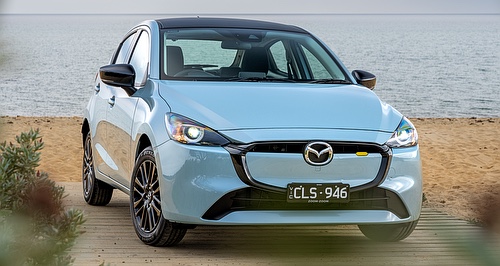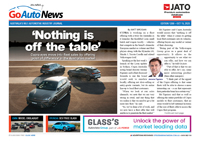Make / Model Search
News - General News - AAAAAA data highlights fuel-use fictionReal-world testing finds popular models use up to 35pc more fuel than advertised12 Feb 2025 By MATT BROGAN NEW data from Australia’s real-world testing program shows seven of the latest 14 vehicles tested consumed up to 35 per cent more fuel than advertised.
The results call into question government issued fuel consumption labels posted on new-vehicle windscreens and highlight a significant flaw in the mandatory laboratory testing of vehicles – both for fuel consumption and CO2 emissions.
Conducted by the Australian Automobile Association (AAA), the real-world testing program has now released real-world fuel use data and tailpipe emissions for 84 of Australia’s most popular models.
The results show more than half of the vehicles tested use at least five per cent more fuel than claimed when driven in real-world conditions, with five vehicles using over 30 per cent more.
Latest tranche results show the Mazda 2 had the largest fuel consumption discrepancy at 35 per cent, followed by the Suzuki Swift Hybrid (31 per cent), Mazda CX-5 (22 per cent), and MG 5 (21 per cent).
The Hyundai i30 and Kia Picanto each used 11 per cent more than the advertised claim, the Toyota C-HR (10 per cent), For Everest and Kia Cerato (8 per cent), Nissan X-Trail (5 per cent), and Mitsubishi Triton (3 per cent) also over their respective claims.
Interestingly, the Nissan Patrol and Isuzu MU-X adhered to the windscreen label, while the Mitsubishi Outlander performed better than expected, coming in some two per cent under the official claim.
“These results again show real-world testing is needed to help consumers and fleet buyers avoid buying a vehicle that produces more emissions and higher running costs than advertised,” said AAA managing director Michael Bradley.
“While some cars perform as per the information at point of sale, our program is revealing that many, if not most, do not.”
Mr Bradley says the AAA’s real-world testing program addresses greenwashing concerns and “will make the New Vehicle Efficiency Standard (NVES) more robust and more effective”.
The federal government’s NVES began in January of this year and now incentivises vehicle importers to sell more low-emissions vehicles to reduce the nation’s transport emissions.
The AAA says that as the NVES starts to “reshape the Australian car market”, real-world testing will become increasingly important to enable consumers to choose models that perform as advertised.
“Testing cars in real Australian driving conditions will help sort the wheat from the chaff when it comes to cars delivering fuel consumption that matches their mandated laboratory test results, and it will act as a complementary audit regime for the NVES”, added Mr Bradley.
“The program is working with the NVES to help make the national vehicle fleet cleaner and more fuel-efficient.”
The Real-World Testing program is a global first. It was developed by the AAA and funded by the Commonwealth government to help Australian consumers and fleets reduce their fuel consumption and motoring costs and access better information on vehicle emissions.
At the 2022 election, both sides of politics committed to supporting real-world testing after the 2015 Volkswagen ‘dieselgate’ scandal and subsequent studies suggested stricter emissions standards might be incentivising car makers to optimise lab test results to avoid regulatory penalties.
The program tests cars on roads in and around Geelong, Victoria, and compares real-world fuel consumption and emissions results with those obtained in mandatory lab tests.
It uses strict test protocols to ensure fuel consumption and emissions results are repeatable and to minimise the influence of human factors such as driving style and changing traffic flows.
Real-world testing program – tranche 6 results*:
*Figures supplied by AAA; all fuel figures stated as litres/100km.  Read more12th of February 2025  Aston Martin delays EV program, againFirst Aston Martin BEV will now arrive ‘before 2030’, five years later than planned11th of February 2025  Nissan to expand use of low-CO2-emission steelGreen steel ratio to increase at Nissan, as Hyundai dirty steel supply chain revealed11th of February 2025  Slow EV sales stymie Porsche’s profitsPorsche joins other OEMs in winding back from EV-only shift; 2025 profits set to fall10th of February 2025  EU-China tariffs threaten Cupra brandVW Group execs warn jobs, Seat and Cupra brands at risk unless EU-China tariffs cut10th of February 2025  Ford goes down range extender roadLacklustre BEV sales and mounting losses prompt Ford to accelerate EREV development |
Click to shareGeneral News articlesResearch General News Motor industry news |











Facebook Twitter Instagram